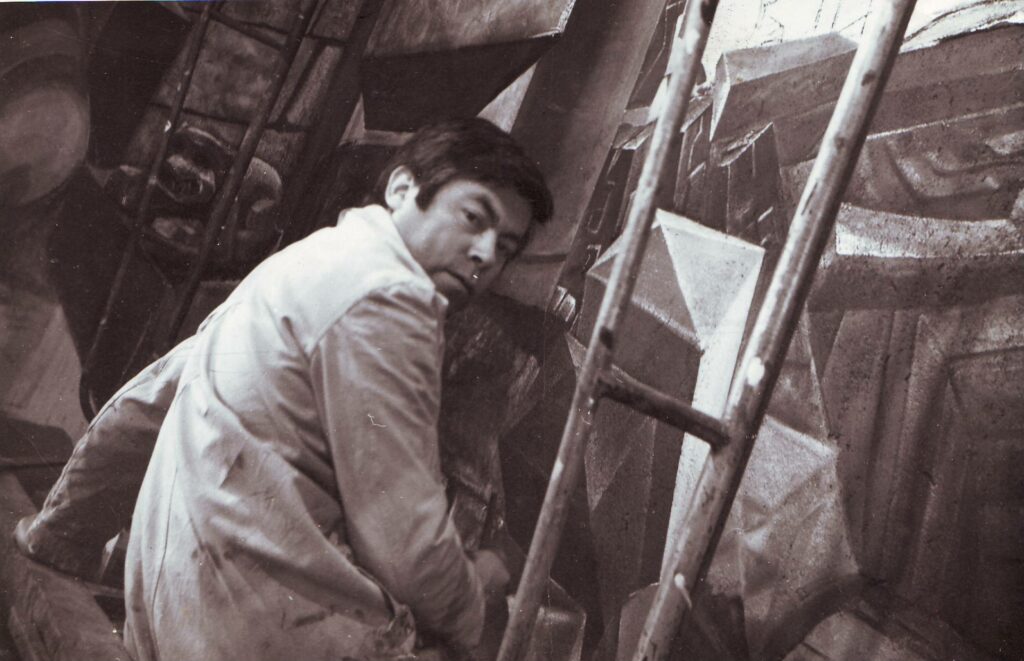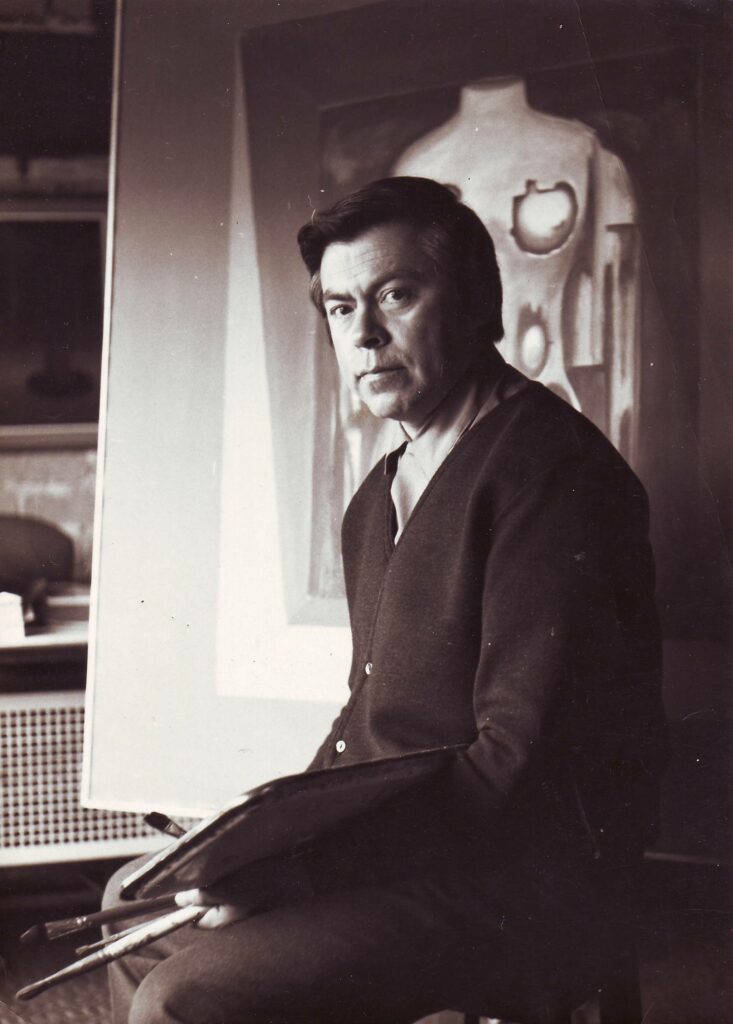Eugenio Brito Honorato
Painter, muralist, ceramist, and sculptor. He was born on June 15, 1928, in Villa Alemana, a small community situated in the interior of Valparaíso, Chile.
Eugenio’s family enrolled him in the Academy of Fine Arts of Viña del Mar in 1942, where he studied a comprehensive course in drawing, painting, ceramics, and sculpture, distinguishing himself artistically at the tender age of fourteen devoted to these disciplines. Arturo Gordon, Roko Matjasic, and Enrique Mosella are notable among his educators. In 1948, he graduated with the degree of “Teacher of Art.”
In 1949, he moved to Lota and launched his career as a designer and decorator at the now-defunct “Lota Green” ceramic factory.
In 1953, the Italian government awarded him a scholarship to study ceramic arts at the Richard Ginori State School of Ceramic Arts in Florence, Italy. In 1954, he settled in Paris and began working as the ceramist George Jouve’s assistant. In the same year, he met Suzanne and George Ramiè, who invited him to the Madoura studio, where he encountered Pablo Picasso. In August of that year, and with Picasso’s support, he exhibited his works at La Salle de la Marie in Vallauris. He traveled through Spain, Belgium, the Netherlands, Luxembourg, and Switzerland, visiting museums and art galleries and feeding on the works of the Great Masters. In 1955, he returned to Chile with a plethora of experiences that would later be reflected in his work.
Back in Chile, he settled in Concepción, where he continued his prolific creative work, which was exhibited in numerous painting and ceramics exhibitions in Concepción, Valparaiso, and Santiago.
In 1958, he was a cultural advisor to Huachipato Magazine on cultural matters and a founding member with other notable people of the ‘Artistas del Acero’ Cultural Center, dependent on Huachipato. He also founded and directed ‘La Cascada’ pottery studio.
In the region, he created murals in the university shopping hallway titled ‘Las Tres Pascualas’, Simón Bolivar Radio, and the kindergarten of the German School of Concepción.
In 1961, the Honorable Municipality of Concepción awarded him the Municipal Art Prize in recognition of his ceaseless creative efforts and advocacy for the advancement of art and culture.
In 1964, he was requested to work with Mexican muralist Jorge González Camarena on the mural ‘Race’ for the National Museum of Anthropology in Chapultepec, Mexico. Later, he collaborated with González Camarena and his staff to create the mural “Presence of Latin America” in the House of Art at the University of Concepción.
In 1966, he moved to Viña del Mar, where he taught at a higher level at the School of Fine Arts, at the Federico Santa María University, and at the University of Chile of Valparaíso, in the fields of industrial design and environmental design.
In 1969, he exhibited at the National Museum of Fine Arts in Santiago, Chile, and later that year, he traveled to Mexico at the invitation of the Mexican government through the O.P.I.C. (Organization for the International Promotion of Mexican Culture) to exhibit his pictorial work there. He exhibits at the O.P.I.C., the Museum of Fine Arts, and the Museum of Modern Art, D.F. In 1970, he exhibited at the Mexican Art Gallery and the Hemisphere Center Art Gallery in San Antonio, Texas, United States of America.
In 1971, he took part in the group exhibition ‘Chilean Engravings’ at the Buenos Aires Museum of Fine Arts. He created a series of murals for Federico Santa Maria University and the Catholic University of Valparaiso in 1972.
At the end of 1975, he was appointed Director of the Art School at the University of Concepción, in addition to his teaching responsibilities at the institution. Numerous exhibitions testify his prolific creative output. In 1978, he displayed his work at the Santiago Museum of Contemporary Art. In 1979, He completed the mural ‘Towards the Light of Knowledge’ for the Federico Santa Mara University, Rey Balduino campus in Talcahuano.
In 1981, he completed his last mural for the Church of Rere, a small town in Yumbel, Biobio.
At the beginning of the 1980s, he began to prepare his final series of paintings, ‘Divertimentos,’ which debuted for exhibition in December 1984. His death took place in Santiago on December fifteenth, concurrent with the conclusion of his last exhibits.

